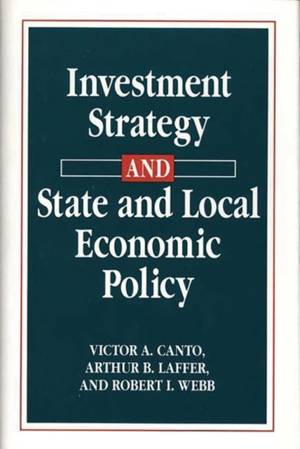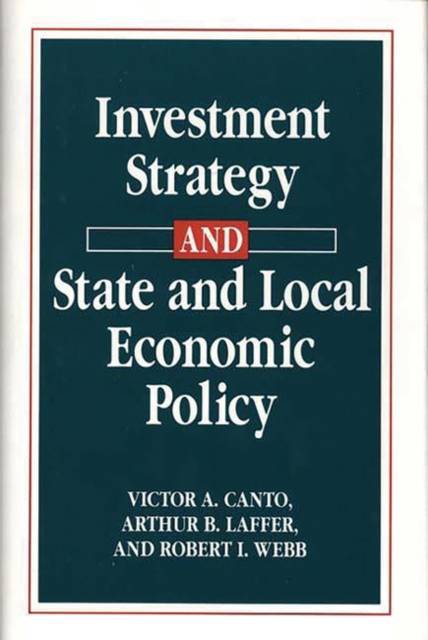
- Afhalen na 1 uur in een winkel met voorraad
- Gratis thuislevering in België vanaf € 30
- Ruim aanbod met 7 miljoen producten
- Afhalen na 1 uur in een winkel met voorraad
- Gratis thuislevering in België vanaf € 30
- Ruim aanbod met 7 miljoen producten
Investment Strategy and State and Local Economic Policy
Victor A Canto, Arthur B Laffer, Robert I WebbOmschrijving
State governments are ultimately competitors in their economic policies when people, products and capital are free to move across state borders. Nowhere is this competition more apparent than in the United States where individual states compete to promote economic growth by attracting industry with tax holidays, outright grants, subsidized financing and other means. Yet, the arguably greater influence of state fiscal policy on investment decisions has largely been ignored. This book redresses that deficiency by providing a collection of chapters which discuss the theoretical and practical linkage between investment strategy and state economic policy. Specifically, it uses changes in relative state burdens as a measure of state fiscal policy and shows that by altering the incentives to work, save and invest, changes in a state's tax burden relative to other states influence decisions on whether, how much and where to invest.
The book is divided into three parts. The first section provides the theoretical framework for the book and discusses application of the basic model to explain the persistent differences in observed real income across states; the level of economic activity; and business starts and failures. The second section discusses, among other things, the implications of changes in state economic policy for investments in real estate; common stocks of small capitalization firms; and state general obligation bonds. The third section of the book, which examines the political dimensions of state economic policy, begins with a discussion of the effect of state economic policy on relative population shifts and reapportionment and ends with a proposal for a flat tax.Specificaties
Betrokkenen
- Auteur(s):
- Uitgeverij:
Inhoud
- Aantal bladzijden:
- 219
- Taal:
- Engels
Eigenschappen
- Productcode (EAN):
- 9780899304052
- Verschijningsdatum:
- 9/10/1992
- Uitvoering:
- Hardcover
- Formaat:
- Genaaid
- Afmetingen:
- 156 mm x 234 mm
- Gewicht:
- 489 g

Alleen bij Standaard Boekhandel
Beoordelingen
We publiceren alleen reviews die voldoen aan de voorwaarden voor reviews. Bekijk onze voorwaarden voor reviews.











